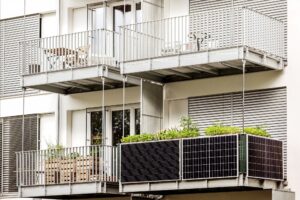The professional body for air quality specialists has welcomed the ambition set out within the government’s Clean Air Strategy, but raised questions over the level of detail offered in how the Strategy’s aims will be met.
IAQM — the Institute of Air Quality Management — has been among the organisations to have published its response to the government’s consultation on the draft Clean Air Strategy, which ended this week (see airqualitynews.com story).
In its response to the consultation, IAQM has welcomed the drafting of the Strategy, which it says it has been calling for for some years, adding that it is encouraged by the breadth of the policy paper in seeking to tackle a number of key pollutants from a wide range of sources.
However, IAQM says that where the Strategy is ‘less convincing’ is in its detail in setting out the pathway in meeting some of the ambitions.
Likely actions to meet aims such as reducing the number of people exposed to concentrations of PM2.5 above 10μg m-3 are not signposted within the strategy, IAQM’s response suggests.
Detail
“The draft strategy lacks sufficient detail for the actions required to meet the stated aims,” IAQM said in its response. “Additionally, many of the “actions” that are described are intentions to consult or develop further strategies and therefore there is little or no detail on proposed responsibilities, mechanisms, enforcement and funding.
“Once the further work is done a further consultation on the Clean Air Strategy would be useful,” IAQM adds.
Further to this the organisation claims that the Strategy lacks an ‘over-arching’ vision of what needs to be done to improve air quality, fails to show how it relates to other government strategies and should give more consideration to the relationship between outdoor and indoor air quality.
Focusing on specific measures set out within the consultation, IAQM has called for further clarity on any potential regulation around the release of particulates from tyre and brake-wear, to avoid what it describes as ‘a new emission limit that is destined to be exceeded’.
“Research should focus on options for materials for tyres and types of road surfaces in order to prevent release of microparticles/microplastics as well as looking at the pathways into our environment, air and marine, and how to prevent the transfer,” it says. “The IAQM considers that the release of metals from tyres and brakes is more important than microplastics.”
Domestic fuels
IAQM notes that the proposal to prohibit the sale of polluting fuels and inefficient stoves for domestic use is likely to reduce the impact of domestic combustion on air pollution, but adds that the public need to be better informed on the environmental cost associated with domestic fuel use.
Wood-burning stoves should not be allowed in urban areas unless there is no grid supply of gas, it adds.
In its concluding remarks the organisation suggests that the strategy “largely comprises calls for evidence, monitoring, reporting, developing/consulting on options and the preparation of further documents.”
“We would like to see further information on responsibilities, timelines, defined enforcement roles and funding,” IAQM remarked.
Related Links
IAQM – Clean Air Strategy consultation response
















